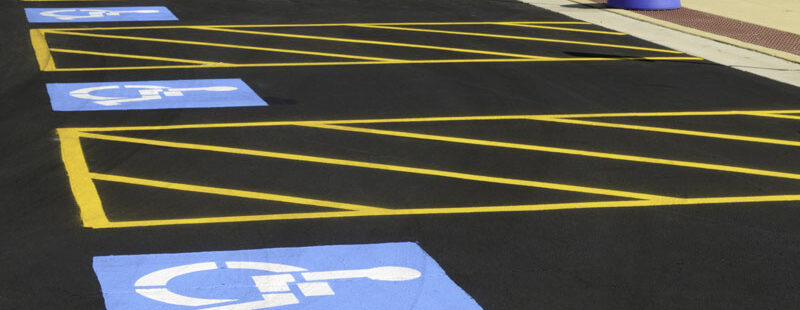
- min min
- No Comments
- August 23, 2025
Avoiding Subbase Failures: How Soil Testing Enhances Surface Longevity
When it comes to surfacing projects—whether it’s a residential driveway, a busy commercial car park, or a major roadway—most people focus on the visible finish. Homeowners want a smooth driveway with a clean look, businesses want durable car parks free from cracks, and councils need reliable road surfaces that stand up to heavy traffic.
But what truly determines the longevity of these surfaces is something hidden from view: the subbase. If the subbase is weak, even the best materials and workmanship on the surface will eventually fail. Cracks, potholes, rutting, and uneven settlement are all symptoms of a compromised foundation. That’s why soil testing is a critical first step in any surfacing project. By understanding the ground beneath, contractors can design solutions that prevent premature failure and deliver a surface that lasts decades, not just years.
What Is a Subbase and Why Does It Matter?
The subbase is the layer of material laid beneath the tarmac, asphalt, or concrete. Its role is to spread loads evenly, provide drainage, and protect the surface from ground movement. Think of it as the foundation of a building—without a strong base, the structure above is bound to deteriorate.
Common issues caused by poor subbase preparation include:
-
Cracking and subsidence: Caused when soil shrinks, swells, or shifts.
-
Potholes: Often triggered by water infiltration and weak underlying soils.
-
Uneven surfaces: Resulting from inadequate compaction or soft soil patches.
A well-prepared subbase prevents these problems, ensuring the surface can cope with constant use, changing weather conditions, and heavy loads.
Why Soil Testing Is Essential
Soil testing involves examining the type, strength, and moisture content of the ground where the surfacing project will be built. It identifies weaknesses before construction begins and provides vital data that determines the right preparation method.
Here’s why it matters:
-
Identifying Weak Soils
Not all soils are created equal. Clay-rich soils, for example, expand when wet and contract when dry, leading to instability. Sandy soils drain quickly but may not provide sufficient load-bearing capacity. Soil testing allows engineers to plan for these challenges by adjusting the thickness of the subbase or adding stabilisers.
-
Preventing Moisture Problems
Water is one of the biggest enemies of surfacing projects. If the soil beneath retains too much water, it weakens the subbase and accelerates surface breakdown. Soil testing measures moisture levels and permeability, helping contractors design drainage systems to protect the surface.
-
Improving Load-Bearing Capacity
Every surface has different demands. A residential driveway might only need to support cars, but a commercial car park or a road carries far heavier loads. Soil testing ensures the subbase is strong enough to withstand the expected traffic.
-
Reducing Long-Term Costs
The upfront cost of soil testing is minimal compared to the expense of repairing or replacing a failed surface. By catching potential issues early, property owners save money in the long run.
Consequences of Skipping Soil Testing
Skipping soil testing is a shortcut that often leads to long-term regret. Contractors who don’t properly assess ground conditions risk building on unsuitable soils, resulting in:
-
Premature surface failure: Even new driveways can show cracks within a couple of years.
-
Costly repairs: Fixing potholes and subsidence is far more expensive than proper preparation.
-
Shortened lifespan: Instead of lasting 20–30 years, a surface may need replacement within 5–10 years.
In commercial and public projects, these failures can also create safety hazards and liability issues. Uneven or broken surfaces pose risks for vehicles, cyclists, and pedestrians alike.
How Soil Testing Enhances Surface Longevity
Soil testing is not just about identifying problems—it’s about providing solutions that extend the life of the surface.
-
Correct Subbase Depth
Testing results guide contractors on how deep the subbase should be. For weak soils, a thicker base is required, while strong soils may need less material.
-
Material Selection
Depending on the soil type, contractors can choose the right aggregates or binding materials. Lime or cement stabilisation, for example, can significantly improve soil strength.
-
Drainage Design
If soil testing shows high moisture retention, proper drainage systems can be installed. This prevents water damage and protects the subbase from erosion.
-
Compaction Techniques
The degree of soil compaction directly affects load-bearing capacity. Testing ensures the correct compaction levels are achieved, avoiding soft spots and uneven settlement.
Together, these measures result in a surface that performs well under pressure, resists cracking, and lasts for decades with minimal maintenance.
Real-World Applications
Soil testing benefits all types of surfacing projects:
-
Residential Driveways: Homeowners gain peace of mind knowing their investment won’t deteriorate quickly.
-
Commercial Car Parks: Businesses avoid costly downtime and repairs by ensuring their car parks remain functional and safe.
-
Public Roads: Councils and contractors deliver safer, longer-lasting infrastructure while reducing the burden of ongoing maintenance costs.
Each of these applications demonstrates the value of tackling potential subbase issues at the start rather than paying for repairs later.
Working with Professionals Who Care About Quality
At East Herts Surfacing, we understand that the strength of any project lies beneath the surface. That’s why soil testing and thorough subbase preparation are built into our approach. We don’t cut corners, because we know how much it costs property owners and councils when surfaces fail prematurely.
Whether you’re planning a new driveway, resurfacing a commercial site, or working on large-scale road projects, our team is here to provide expert advice and long-lasting solutions.
Conclusion
Soil testing may not be the most visible part of a surfacing project, but it is one of the most important. By assessing the ground conditions, preventing moisture problems, and ensuring proper load-bearing capacity, it creates a foundation for success.
Avoiding subbase failures is not just about technical precision—it’s about protecting your investment, reducing long-term costs, and delivering safe, reliable surfaces for years to come.
For expert guidance and a free consultation on your next surfacing project, contact East Herts Surfacing.





